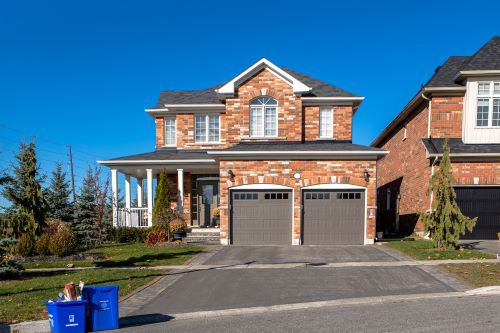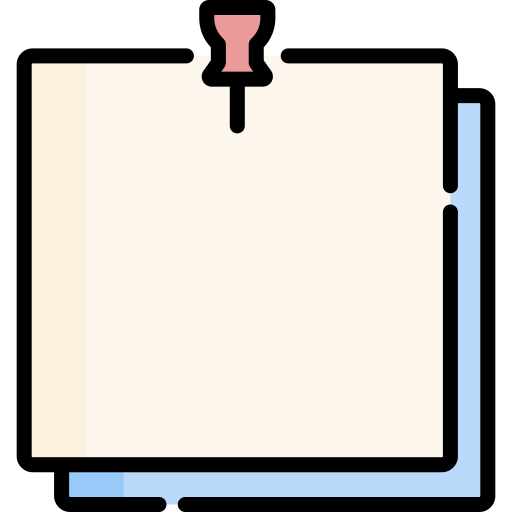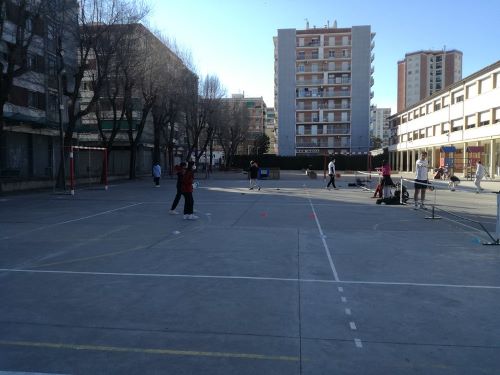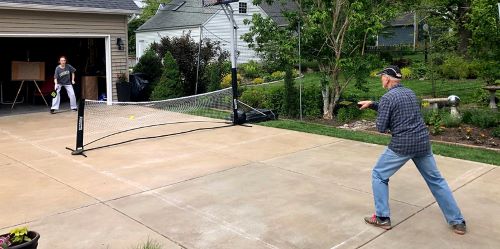Pickleball is an increasingly popular sport because it’s simple and beginner-friendly, especially for the elderly or the physically unfit.
However, the sport isn’t popular enough yet to be everywhere, so finding a pickleball court near you can definitely be a problem. Because of this, a lot of people are asking if they can play pickleball on a concrete driveway instead. Are there downsides to this, and how bad can they be?
Let’s find out.
Can You Play Pickleball on A Concrete Driveway?
Pickleball is highly versatile and can be played on a variety of surfaces. And yes, you can certainly play pickleball on a concrete driveway, provided your driveway is big enough to play pickleball on.
A pickleball court is 20 feet (6.1 meters) wide and 44 feet (13.4 meters) long for both singles and doubles play. A typical American driveway is only around 20 to 40 feet long and 9 to 12 feet wide for a single vehicle.
If this sounds like your driveway, does that mean you can’t play at home, since your driveway is too small? Not at all! As long as you want to play pickleball and you’re willing to bend the rules of the game a little bit, playing on a smaller court is completely fine. After all, pickleball is a fun game meant for everyone.
Why You Shouldn’t Play Pickleball on Bare Concrete
While concrete driveways are certainly flat and convenient locations for an impromptu pickleball game, these surfaces can be deceptively dangerous for players over time. Pickleball is an active game that involves quick, sudden movements, lateral jumps, and sprints. These activities put a certain amount of strain on your body, which is amplified when playing on a hard surface such as concrete.
Here are some compelling reasons to avoid playing pickleball on bare concrete:
-
It’s Bad for Your Joints
Bare concrete is hard and unyielding, causing increased pressure and shock to your joints—particularly the knees and ankles—as you run, jump, and pivot. The hardness of concrete can lead to a higher risk of injuries like sprains, strains, and stress fractures. Over time, the increased joint stress can contribute to the development of chronic issues like tendonitis or even osteoarthritis.
-
Increased Risk of Serious Injuries When You Fall
With all the jumping, swerving, and running involved in pickleball, you could very easily trip and fall. When you do, you’ll be lucky if all you get are scrapes and scratches. Concrete’s lack of cushioning can lead to more serious injuries like concussions or broken bones.
Professional Pickleball Courts Are Not Made With Only Concrete
If you don’t have any experience with playing court sports on professional-standard courts, then you might not know that professional pickleball courts aren’t solely made with concrete.
Professional pickleball courts are made up of two primary components: the surface coating and the base material.
-
Base Material
The base material of a pickleball court is usually concrete or asphalt since both these materials provide a stable, flat surface. Concrete is extremely durable, while asphalt has a bit more give, making it a bit gentler on the joints.
-
Surface Coating
The surface coating of a pickleball court typically consists of an acrylic compound mixed with a granular substance. This creates a slightly textured surface, providing traction for players while allowing the ball to bounce predictably. Surface coatings are added on top of the base material.
This is true for other court sports as well, like tennis and badminton. In fact, some courts are so strict about keeping their surface coating clean, that they will require you to use clean shoes with non-marking soles. We go in-depth on this topic in our article about the best pickleball shoes you can buy.
What Is the Best Surface to Play Pickleball On?
For avid players or those interested in taking up pickleball more seriously, investing time to play on a proper court will pay off in both performance and health. The best surface to play pickleball ball on is one that is flat and solid, but feels springy because of the surface coating. The surface coatings are not only easier on your joints, but are better for making the pickleball ball bounce as well.
However, we do suggest that you play pickleball on rented courts first before you decide to transform your driveway or backyard into a proper pickleball court.
Once you’re sure that you want to build your own pickleball court, then here’s everything you need to know about how much a pickleball court costs, and the best pickleball court surface coatings you can buy.
How to Play Pickleball on A Concrete Driveway
If a designated pickleball court is not an option and you’re still keen on trying out the sport, your concrete driveway can serve as a makeshift court. However, it is important to take precautions to ensure a safer and more enjoyable playing experience.
Clean The Driveway
Before setting up your pickleball court, you have to first clean your driveway thoroughly. Remove any debris, rocks, or leaves, as these could cause tripping or affect the movement of the ball. A clean surface also reduces the risk of scratching or damaging your pickleball equipment.
Patch Cracks and Flatten the Surface
After cleaning, inspect your driveway for any cracks or uneven areas. If you find any, it’s important to patch these up and flatten the surface. This not only helps the ball bounce accurately but also reduces the risk of injuries from trips and falls.
Add Markings to Indicate Court Boundaries
As you patch up the cracks, take the opportunity to mark out your court boundaries. Remember, pickleball courts are smaller than tennis courts, so adjust the dimensions accordingly. You can use chalk or temporary paint to mark the lines.
Do Proper Warm-Ups and Stretches to Avoid Injury
Before you start any game of pickleball, especially on a harder surface like concrete, it’s crucial to prepare your body with proper warm-ups and stretches. Engaging in a dynamic warm-up routine raises your body temperature, loosens your muscles, and gradually increases your heart rate to make your body ready for the game.
Include exercises that mimic the movements you will be making in the game, such as side-to-side steps, gentle lunges, or arm swings. Follow these up with some targeted stretching, paying particular attention to the muscles that will be most active during the game—your calves, thighs, hips, back, and shoulders.
This pre-game routine can significantly reduce your risk of sprains, strains, and other injuries. It also improves your agility and performance on the court, making your game more enjoyable.
Don’t Play for Too Long
While pickleball is undeniably fun, playing for extended periods on a concrete driveway will take a toll on your body, particularly on your joints. Long durations of play also lead to fatigue, which can compromise your form and technique, and increase the risk of injuries.
It doesn’t help that during intense or prolonged activity, your body produces adrenaline, which is a hormone that can mask pain and fatigue. Yes, it will make you feel invincible in the moment, but the effect is temporary. Once the adrenaline wears off, you might find yourself riddled with body pains or injuries that you didn’t notice during the game.
So, take regular breaks, hydrate well, and pay attention to your body. If you start to feel any pain or discomfort at any point, don’t push through it by taking pain medication. Temporarily masking the pain won’t help because you can seriously aggravate your injury if you push your body to keep performing. Rest first. In time, the pain will go away. But if the pain persists, consider seeking medical attention.
Don’t Play Too Competitively
While a little competition can add to the excitement of the game, getting overly competitive on a concrete driveway can be dangerous. A highly competitive mindset might push you to take unnecessary risks, like diving for a ball or overexerting yourself, which can and will lead to injuries.
Playing on a concrete driveway already increases the strain on your joints. Aggressive movements or risky plays can amplify these effects, potentially leading to serious acute or chronic injuries.
Play Safely to Have Fun
Remember, these measures can make your driveway more suitable for casual pickleball play, but they do not replace a professional court. The key to enjoying pickleball on a makeshift court is to prioritize safety and fun over competition. Play at a comfortable pace, respect your physical limits, and focus on improving your skills rather than winning the game.
Once you start to really enjoy the game and want to play more regularly, then you can consider investing in a proper court or finding a local facility where you can play. Playing on a proper pickleball court will enhance your game and minimize the risk of injuries so you can enjoy pickleball safely for many years to come.




































